Have you ever woken up in the middle of the night because your room feels hot and stuffy? Or have you observed that there are certain rooms in your house that feel hotter compared to the others? We researched why this happens, and here is what we found.
There are several reasons why your room feels hotter at night. This can be because:
- Your house is oriented in an undesirable way
- You have a dark-colored interior
- There is no roof insulation
- The thermal insulation in your walls is poor
- You have a poor ventilation system
- Air conditioning-related issues
If you still have some additional questions, don't worry. In this post, we'll discuss the topic in greater detail. Keep reading as we explain how each of these factors affects the temperature in your room and what to do about it.
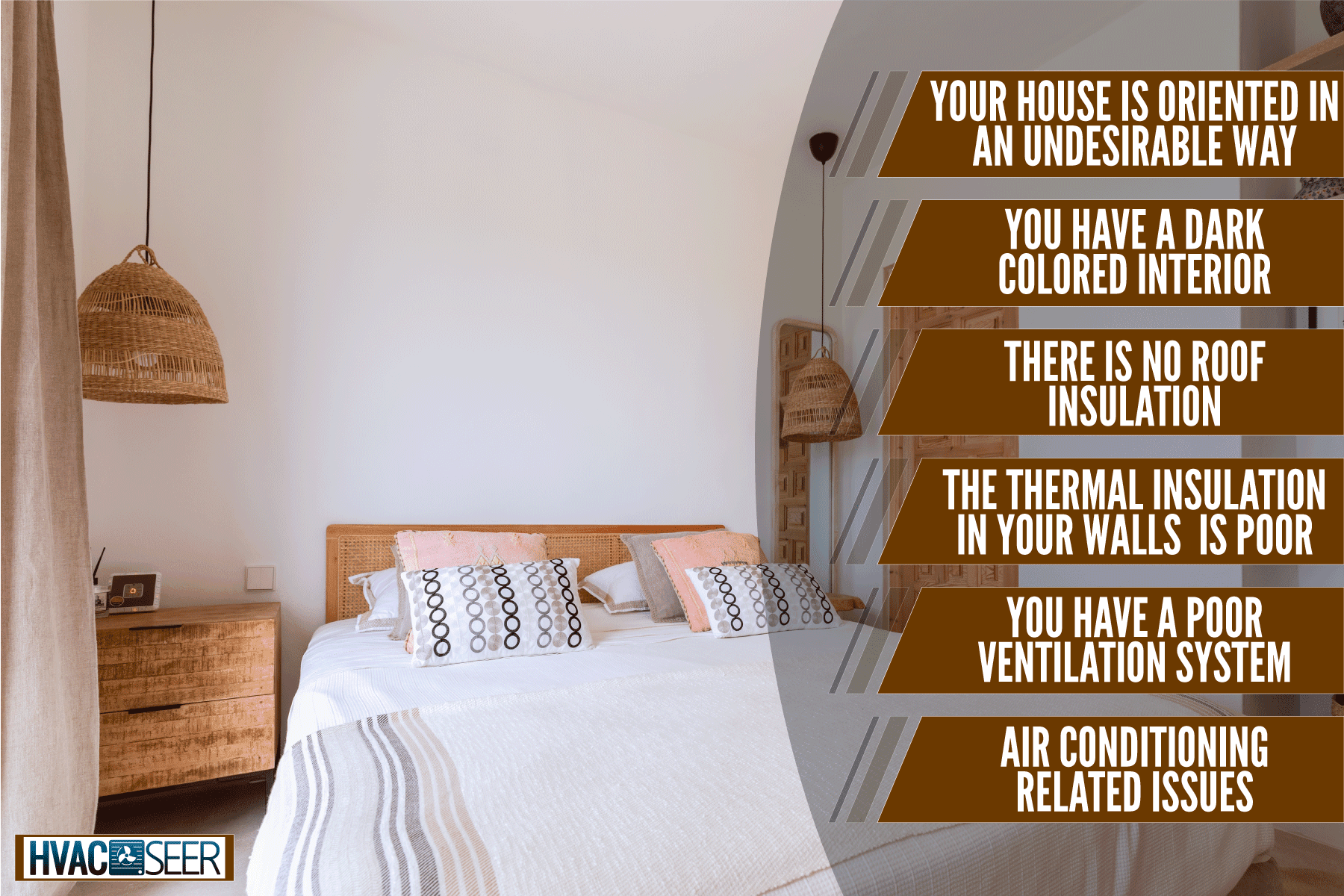
Why Your Room Feels Hotter At Night
Here we'll talk more about the potential culprits behind your hot room.
Your House Is Oriented In An Undesirable Way

Your home's overall heat gain is largely influenced by the cardinal direction it faces. The rooms and furniture absorb the sun's energy and can warm significantly if the majority of your home's windows and glass doors are exposed to direct sunlight.
The lack of sunscreens, whether natural or built-in, makes the issue worse.
Click here for these bamboo blinds on Amazon.
You Have A Dark-Colored Interior
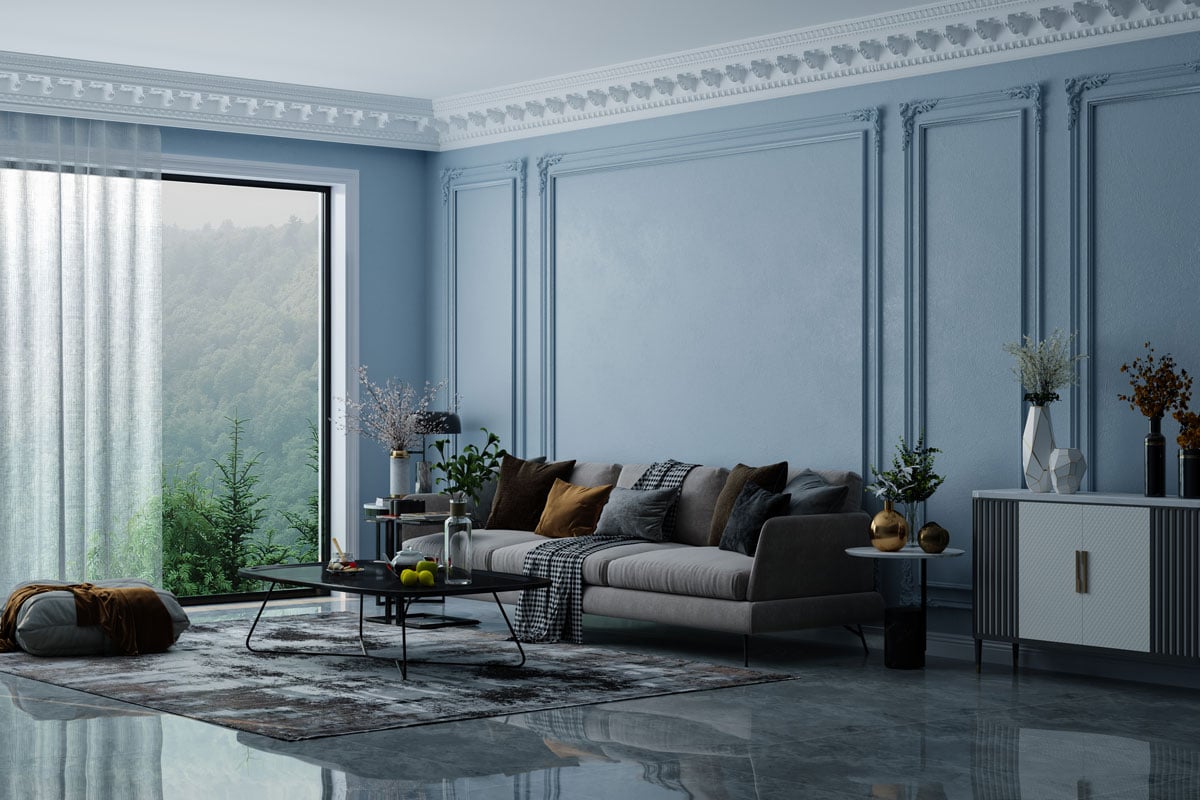
When the temperature inside the house rises, the warm air's energy is absorbed by the floor, walls, ceiling, and furniture.
Black in particular absorbs more light energy and generates more heat than lighter-colored items. This heat absorption occurs throughout the day and accumulates in the furniture and building components because air warms and cools more quickly than solid objects.
The indoor air temperature drops as the sun sets and the outside temperature rises. However, because the temperature inside has dropped, there is higher than normal energy retention in the building and furnishings, which causes energy to be released.
In messy homes, this impact is generally more noticeable.
There Is No Roof Insulation
Without proper insulation, a roof allows heat to radiate down to the floors below. When inadequate ventilation traps the heat indoors, you may notice the air warming, and it may even get hotter inside than outdoors.
The main causes of a house being heated when the outside temperature rises are either a lack of roofing insulation that is inadequate.
What Are The Best Roof Insulation Types For Your Home?
Here are some of the best types of insulation you can use for your roof:
1. Spray Foam
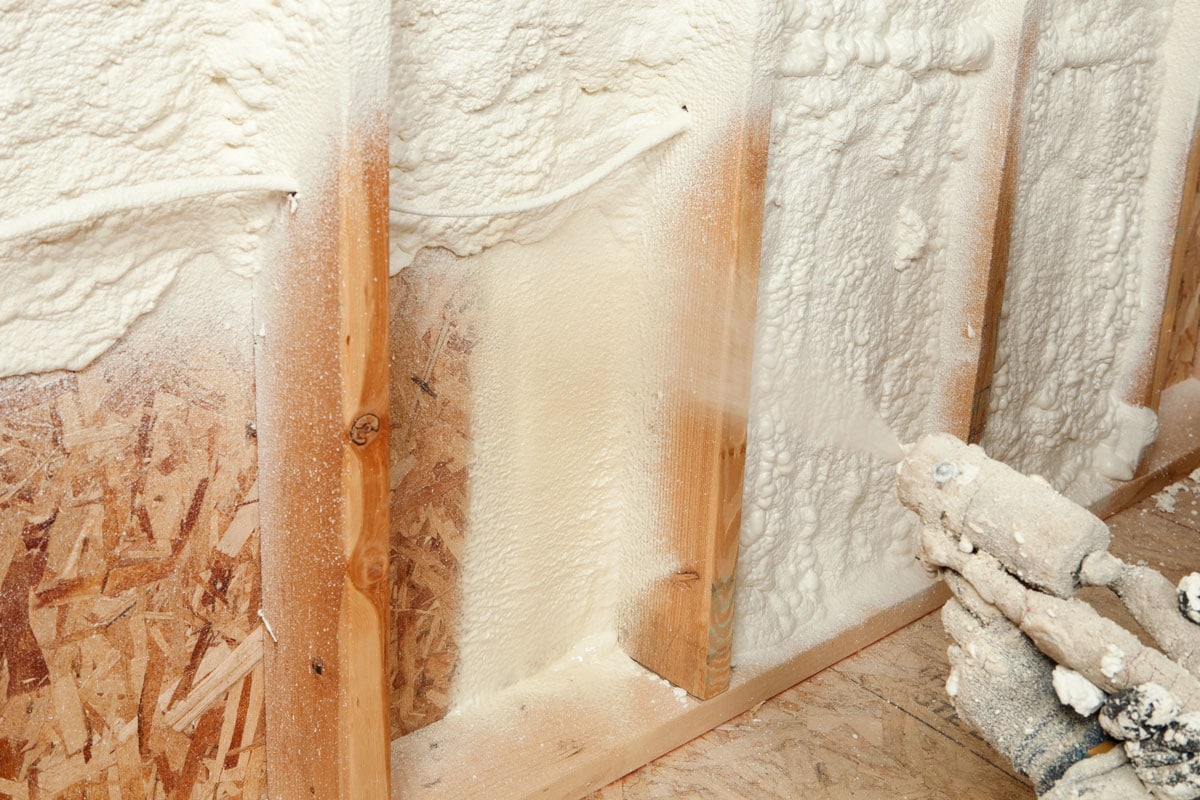
When using spray foam insulation, the underside of the roof deck, slates, and tiles are equally coated with a polyurethane or latex spray. This not only offers insulation but also seals fractures and prevents moisture from entering the house.
2. Batt Insulation
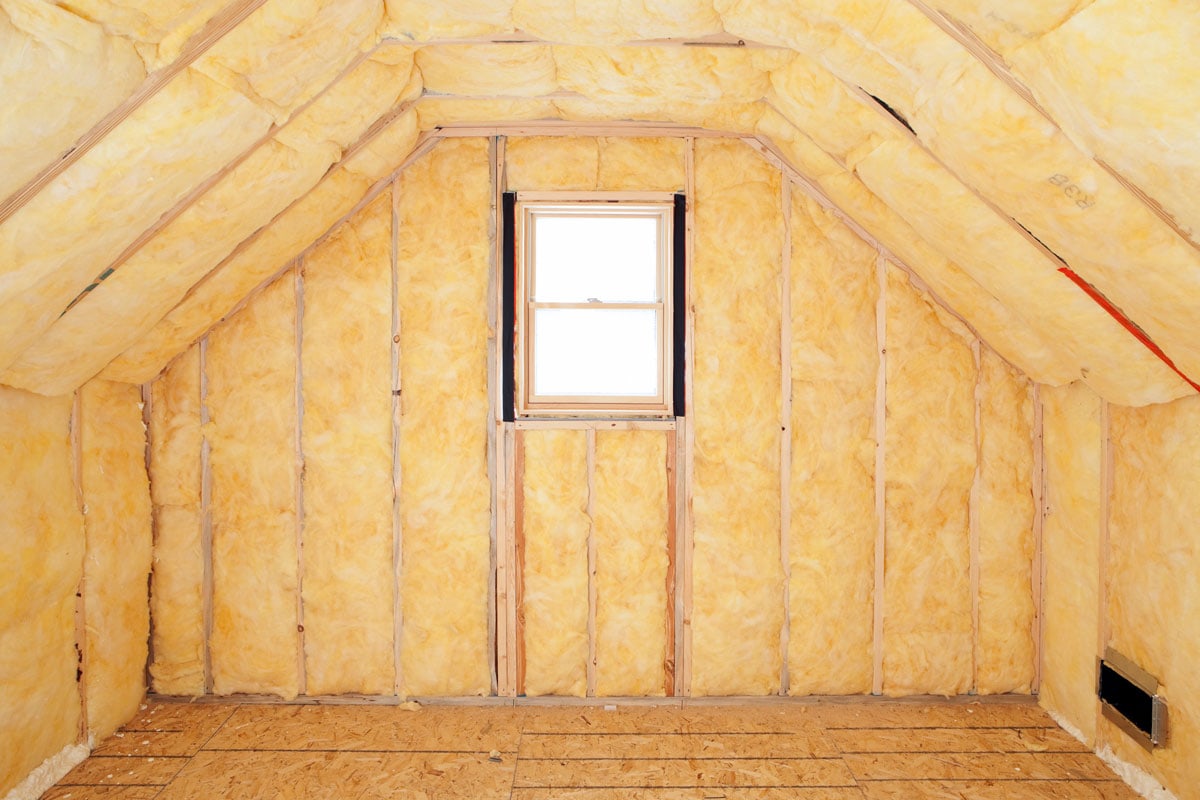
This is a widely used kind of insulation that is comprised of fiberglass and is reasonably easy to install on your own. Rolls of batt insulation are available in various diameters and R-values.
Although the insulation can be trimmed to fit around rafters and ceiling joists, spray foam insulation offers a better seal.
3. Loose-Fill Insulation

For filling a big space such as an attic or crawl space, loose-fill or blown-in insulation made of fiberglass, cellulose, or recycled materials is an excellent choice. A flexible tube can be used to blast it into the area, making it possible to insulate a confined space.
The total amount of insulation is something you can regulate, which might help you get the proper amount for your environment.
4. Structural Insulated Panels
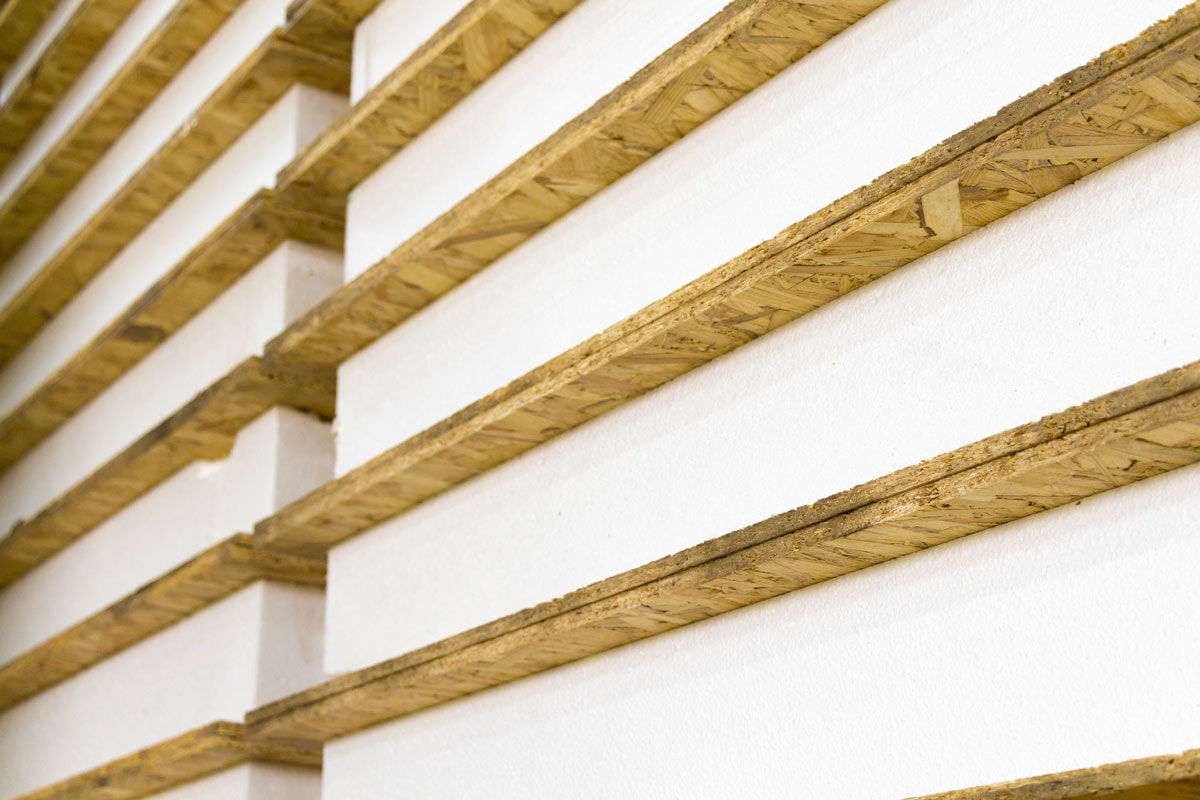
SIPs, also known as structural insulated panels, have stiff insulation placed between two sheets of plywood. Because of this, they are challenging to retrofit into homes, but they are a popular and long-lasting alternative to include when designing a home.
5. Rigid Foam Board
The dense sheets of closed-cell foam, such as polyurethane, polystyrene, or polyiso, are used to create these sturdy foam boards. The majority of the home, including the roof, basement, rooms, and attic, can be insulated with rigid insulation boards.
The Thermal Insulation In Your Walls Is Poor
When there is no insulation to stop or slow down the energy transmission, heat easily penetrates the walls. But what if you have insulated walls? How do you know if they are working properly to keep your house insulated?
Here are 9 signs that tell you that your house is under-insulated:
1. Variations In Indoor Temperatures
If there is proper insulation, you'll have constant temperatures in all of your home's rooms. However, if your insulation is inadequate, you'll see significant temperature changes from one room to the next.
This is a byproduct of heat being trapped in spaces with better insulation and escaping from spaces where your home may need better insulation support.
2. High Energy Costs
Controlling the temperature in a home consumes a lot of energy. This is especially true if you reside in a state where the temperature experiences dramatic highs and lows.
Improperly insulating your home can make the situation even more serious. Your heating and cooling systems will have to run nonstop to make your living area pleasant if the insulation is poor.
This results in significant energy costs. Lower heating and cooling costs will result from investing in good insulation for your home.
3. Your Ceiling And Wall Surfaces Seem Cold To The Touch
Your home's interior walls, ceilings, and floors ought to be cozy and dry. There is not enough insulation if drywall and paneling inside a house feel damp or chilly. A home's insulation, on the other hand, keeps warm air inside, so touching an exterior wall should feel cold.
4. Pest-Related Issues
Nothing is worse than coming home to see bugs and rodents! Animals can enter through teeny cracks and holes near windows and openings. Unfortunately, warm air leaves through these openings, and cold air enters through them.
5. There Are Water Leaks
If your attic appears to be damp and moldy following periods of severe rain, your insulation may be suffering. Installing new insulation will help you keep moisture and water out.
6. Your Pipes Freeze Regularly
You should feel secure knowing that the pipes in your walls are protected from the weather and can continue to perform normally if you reside in a location that has subfreezing temperatures in the winter.
During the bitter winters, inadequate wall insulation might result in expensive pipe repairs.
7. Presence Of Ice Dams
The heat from your house can affect your gutters if it escapes through your ceiling and melts the snow on your roof. If this occurs, they may refreeze and become blocked. Additionally, this may produce hazardous icicles.
8. Air Drafts
Poorly insulated homes might develop drafts inside due to shifting air temperatures and winds. Many first-time homeowners are surprised by this and are perplexed as to why they are experiencing drafts with all the windows and doors closed.
Insulation is likely to be to blame if you frequently experience drafts in your home but are unsure of their source.
9. Noise Transmission
Noises from your home do an excellent job of not leaking into the street and vice versa thanks to insulation. By adding insulation to your home, you might find some relief on both counts if you frequently receive noise complaints from your neighbors or if loud street noises keep you up at night.
What Is The Recommended R-Value For Wall Insulation?
You will require a varied R-value depending on where you reside and the area of your home you are insulating (walls, crawlspace, attic, etc.). R-13 to R-23 is typically recommended for external walls, whereas R-30, R-38, and R-49 are frequently used for ceilings and attic areas.
You Have A Poor Ventilation System
Keep in mind that air must always be able to circulate freely. This will let hot air escape from your bedroom so that cooler, fresher air can take its place.
Without adequate circulation, the heat will build up in your bedroom and stay there. Your body, anyone else in the room, and electrical equipment like laptops and TVs are all the sources of this heat.
In addition, inadequate attic ventilation contributes to attic heating. Some of the unvented heat from the attic will leak down into your room and increase the temperature.
Air Conditioning-Related Issues

- Your air conditioner needs repair and is blowing heated air.
- Your AC system has poor ductwork.
- The AC capacity in your room is not enough.
Final Words
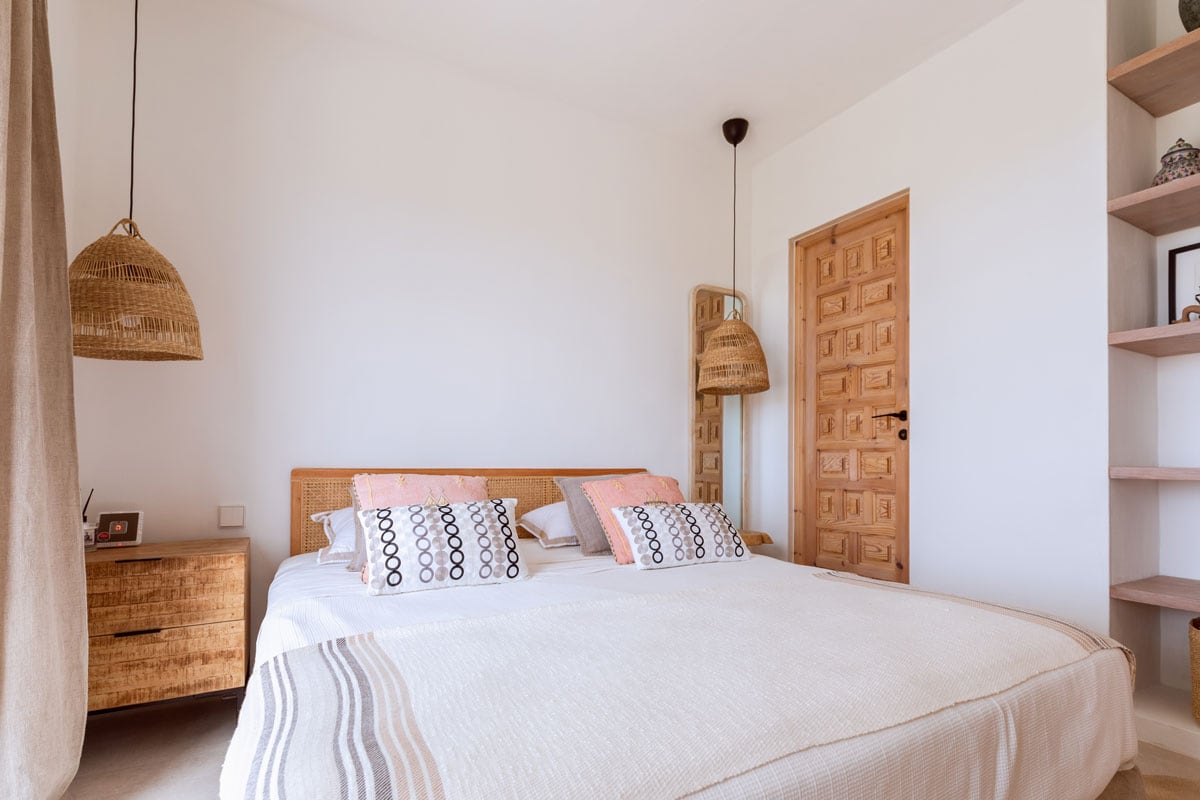
Addressing the cause of the temperature rise in your room will not only help in maintaining the level of comfort you deserve but also help in saving energy and cost that might affect you in the long run.
Before you go, check out these other articles:


